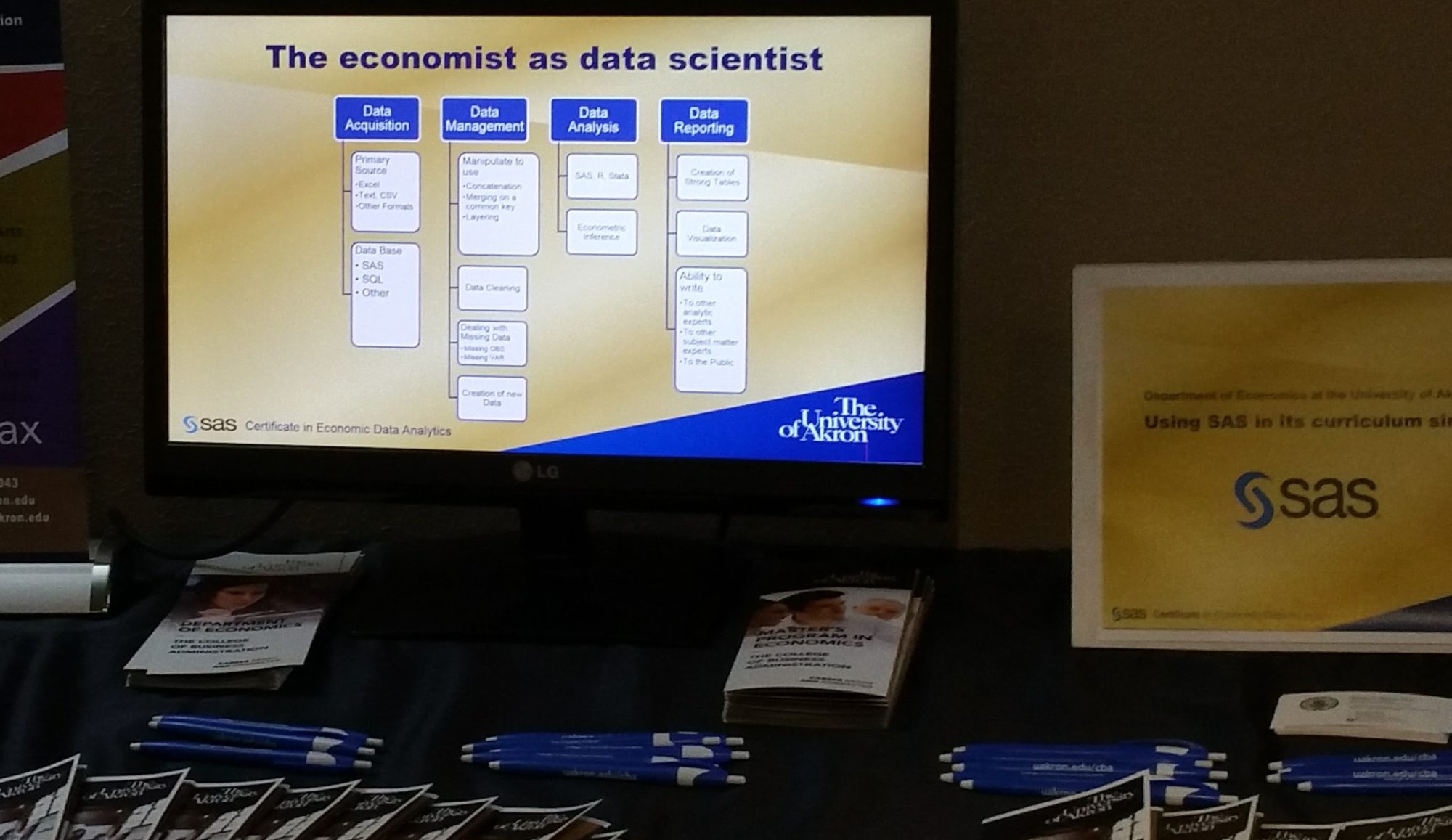

This year the SAS Global Forum canceled for good reasons. I was looking forward to walking amongst the cherry blossoms with my wife Kimberly. I remain excited about the opportunity to speak to SAS Educators about educating economics students and to highlight our SAS partnership at the University of Akron, College of Business Administration, Department of Economics. Thanks go to Josh Horstman for his invitation on behalf of the Global Forum Content Advisory Team. I missed meeting up with all of the great people of the SAS Global Academic Programs including Lynn Letukas, director, and Rochelle Fisher, our program manager for the University of Akron.
I had hoped to expand friendships with colleagues met and those to be met and those who I have met only online. And, perhaps most of all, I am disappointed that I missed being presented with the 2020 SAS Distinguished Educator award.
Honored and humbled
I am still honored and humbled by the 2020 SAS Distinguished Educator award and recall the congratulatory call from Lynn with the same original shock and pleasure. Also, I am honored to be invited to speak at the SAS Global Forum. Thanks to all involved, especially the conference chair, Lisa Mendez, who worked so hard to coordinate this gigantic global event. I was pleased to meet her at SCSUG and hear so much of the news about the upcoming event.
My Published Paper
Nevertheless, I want to announce that my paper is now published in the 2020 SAS Global Forum Proceedings. My paper titled Show Me the Money! (thanks to Josh for that part) Preparing Economics Students for Data Science Careers is embedded below and a link to download is on the floating menu bar. The paper is a combination of my journey over my four-decade career and description of our programs and SAS use in the Department of Economics and why economists make great data scientists.
If you take time to read it I would appreciate any feedback you have. We can discuss curriculum or whatever, and I hope to leave this as I retire from UA as a roadmap for faculty that follow.
Enjoy and please contact me to discuss.
Other posts on educating economics students with SAS
Please check out other SAS education-related blog posts. A few examples of educating economics students:
SAS Boot Camp
SAS Coding, Problem Based Learning and preparing economists for data science careers: frustration to elation
SAS Certificate in Economic Data Analytics
Economic Freedom: Solve Problems, Tell Stories
Importance of Economic Analysis to Data Science


